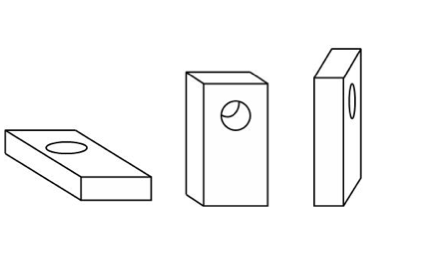MODULE: Gestalt theory
Step 05 of 16: Invariance
The final of the four high-level Gestalt Principles is invariance. In Mathematics the term refers to something that remains the same even when transformation is applied to it, the same is true of the Gestalt understanding of invariance. It recognises the human mind's very sophisticated capability of recognising the same object even after having been transformed. For example, the figure below shows three different illustrations, but to the adult viewer these are simply three states of transformation of the same object.

How can this occur so rapidly? again if we are to distance ourselves from our very intuitive ability to apply mental transformations to this object and arrive at a speedy conclusion that it is the same object from different perspectives, we should just be perceiving three shapes with no relationship. We can even imagine the direction and axis of rotation between the three states. It is easy to dispel the significance of the mind's ability to anticipate this transformative behaviour as a result of our everyday spatial interactions across time, but before we jump into the Gestalt Laws that govern grouping perception we should really come to an important conclusion as Designers and visual communicators...
The mind's ability to form a "whole" picture from missing parts is constant, rapid and unconscious. Therefore the audiences we Design for are not dull receptors perceiving a static array of "pixels", they are sophisticated adapters contantly applying meaning to what they think they see.
The empowered Designer rewards this understanding.
Too vague? it's something more easily described in person =) ...ask nik